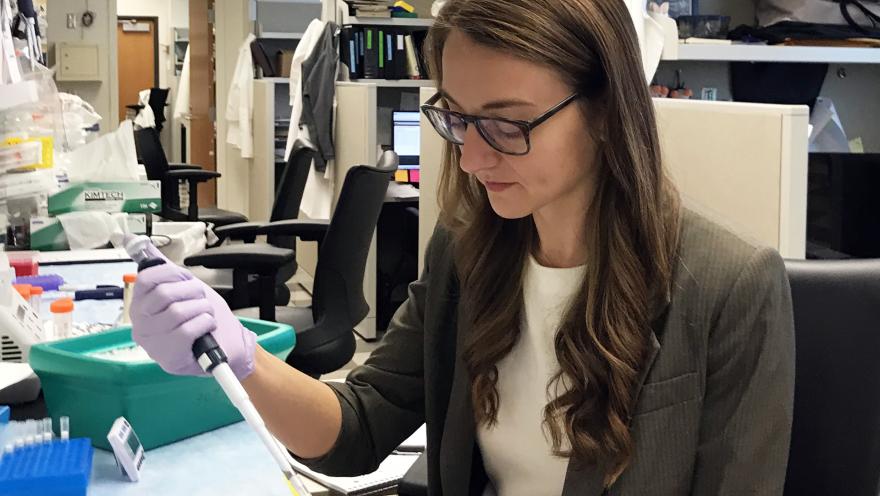The ALS Association is happy to continue our tradition of supporting bright, young scientists in ALS research through our Milton Safenowitz Postdoctoral Fellowship Program. These awards encourage young scientists to enter and, importantly, to remain in the ALS field.
We are proud that 90 percent of our funded postdoctoral fellows go on to start their own ALS research labs and continue to mentor more young scientists, further adding innovative ideas to the field.
This year, we are supporting six new postdoctoral fellows out of a highly competitive applicant pool. This is the third in a series of six articles highlighting the dedication and unique contribution each fellow makes to ALS research, while getting to know the person behind the lab coat.
Today, we sit down with Dr. Maria Purice from St. Jude Children’s Research Hospital to learn about her unique research project aimed at understanding the disease pathways leading to both inherited and sporadic (non-inherited) ALS.
Maria Purice, Ph.D.
St. Jude Children’s Research Hospital
Mentor: Dr. J. Paul Taylor
Project: Linking TDP-43 pathology with stress granule dynamics
What is your message to our generous donors?
I am sincerely honored to have been selected as a recipient of The ALS Association Milton Safenowitz Postdoctoral Fellowship. Thank you very much for your kind generosity. None of my research would be possible without your contributions and ongoing support.
A large part of doing research is spent on trying to get independent funding and, because of your kind gesture, I am able to focus my time and efforts on my research project in the lab, trying to uncover the link between the genes that are mutated in familial ALS and disease progression. Thank you again for your support!
Why did you choose to focus on ALS research? What do you like about working in this field?
Recent advances in genome sequencing have really propelled the research in the ALS field to not only better understand the disease itself, but also to discover new cellular and molecular pathways involved in normal cell function, which is really exciting to me.
In addition, the researchers in the ALS field are engaged with the people affected by ALS, their families, and their physicians, making the ALS field an inspiring community to be part of.
Briefly describe the goals of your funded research project.
The main goal of my project is to understand the molecular pathways that lead to inherited (in which we know the mutated genes) and sporadic (non-inherited) forms of ALS by studying how these inherited ALS forms lead to the disease.
What is the impact of your research on the ALS community?
Familial forms of ALS are caused by mutations in genes that have distinct functions. Interestingly, mutations in most of these genes are associated with the same central pathology, such as TDP-43-positive cytoplasmic inclusions (clumps of the TDP-43 protein in cells) in the brain and spinal cord of people with ALS.
Also, many of the genes encode proteins that are components or regulators of stress granules, which are organelles that reversibly form in response to stress and are composed of proteins and RNA.
My project seeks to understand the link between dysfunction in stress granule dynamics and the accumulation of pathological TDP-43 inclusions.
Tell me something unique about yourself.
I have four brothers and four sisters, and our eye color follows Mendelian genetics perfectly.
Click here for more detailed information about Dr. Purice’s project.
The Milton Safenowitz Postdoctoral Research Program falls under our TREAT ALS Global Research Program and was founded by the Safenowitz family through the Greater New York Chapter of the Association. Mr. Safenowitz died of ALS in 1998 and the family and chapter continues its support to this day. Each award is for $100,000 over a two-year period.


Join the conversation. Please comment below.